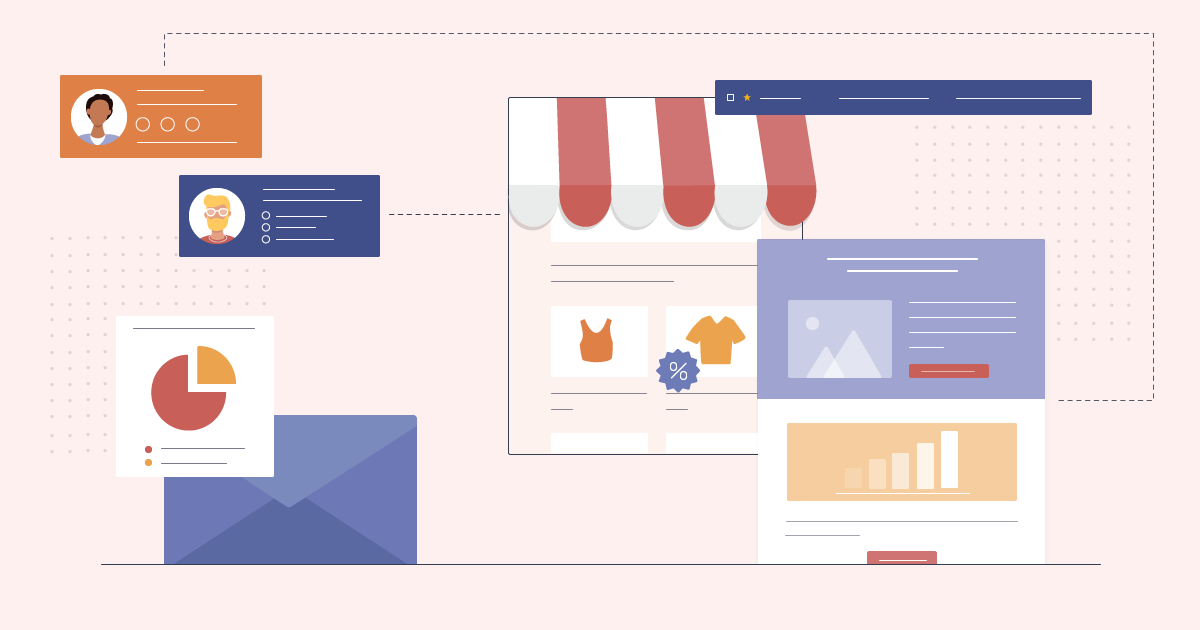
Zero-Party vs First-Part Data: What Changes in Email Marketing [2025]
With third-party data phasing out, marketers are turning to sources they can control. And while zero-party data vs first-party data often sounds like a debate, both help you understand your customers.
Think of the Friends scene where Rachel hands Ross “18 pages, back and forth,” explaining what she needs to get back together after their breakup.
That’s zero-party data: voluntarily shared information and terms. But Ross barely skims it, choosing instead to respond based on Rachel’s past behavior and what he thinks he knows about her.
That’s a challenge brands face, too. First-party data tells you how your audience behaves. It’s incomplete on its own, though. When customers willingly share zero-party data, it’s better not to ignore it.
In this guide, we’ll break down the difference between zero-party and first-party data, why zero-party deserves more attention, and how proper data collection leads to more targeted emails and stronger customer relationships.
Rely on conversations, not just clicks
Collect data directly from your subscribers and build emails they want to read.
Start freeZero-Party Data vs First-Party Data: Differences and Examples
Zero-party data is information that customers willingly share with you. It’s an intentional action, often in exchange for something they value, like a small incentive or the promise of personalized emails and offers.
Imagine a food blogger inviting users to sign up for an online culinary workshop. In the form, they’re asked to enter their cooking experience and favorite cuisine. Once they sign up, they’ll get a welcome email with a free recipe collection tailored to their taste.
Other kinds of zero-party data include:
- Personal details that users fill in during account creation, such as birthday, job role, or product-specific goals
- Favorite products or services from post-purchase surveys and reviews
- Topic interests, content formats, or communication frequency shared through preference centers
- Product or feature requests submitted via customer support feedback
First-party data, on the other hand, is information collected passively while customers interact with your brand. In this case, permission is implicit. Plus, there’s no (immediate) reward, unlike incentivized zero-party data.
Let’s say a visitor browses beginner photography courses on an online learning platform. They select a course titled “Photography Basics,” click on the signup button, but don’t complete the form. Although they didn’t share more, the intention is clear.
Here are the most common sources of first-party data:
- Information from website analytics, e.g., session duration
- Email marketing metrics, such as clicks and conversions
- Social media interactions, like comments and shares
The Case for Prioritizing Zero-Party and First-Party Data
With spammy practices and phishing attempts on the rise, consumers are more protective of their data. Intrusive tactics like third-party cookies are no longer an option, which means marketers can’t rely on others for audience information.
Enter zero-party and first-party data. While different in nature, they’re both reliable insights that help you understand your customers and send emails that resonate.
In the case of first-party data, you have digital footprints that showcase your audience’s preferences. But while they might know you’re tracking their behavior, they don’t directly say what they want or control which data you collect.
Whereas in zero-party data collection, everything is explicit. Customers know you’re gathering their data, for what purpose, and (hopefully) how you’ll use it. You hand over control, so they decide what to tell you. As a result, you get accurate and up-to-date information to use in future emails.
Business-wise, you might prioritize zero-party data due to privacy concerns. However, it’s not just about compliance. It’s mostly about putting your customer first. And that’s how you build trust and long-term engagement.
Think about lead magnets: they’re not just incentive swaps for contact details. They initiate conversations built on value, consent, and mutual interest.
Recent research shows that these are the top factors influencing brand preference:
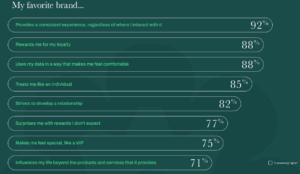
Zero-party data helps you meet these expectations when handled properly. To make that happen, let’s see how you can put data into action and create one-of-a-kind emails that “make customers feel like VIPs.”
How to Collect Zero-Party Data the Right Way
Far from being a privacy-friendly replacement for cookies, zero-party data is an ongoing opportunity to turn emails into dialogues and personalization tools. Here’s how:
Focus on essential data first, and build gradually
Some marketers fear that relying on zero-party vs. first-party data means knowing less. But what you do know matters more.
Consumers are willing to offer brands direct feedback on their needs when it feels relevant, not intrusive. That’s why it’s important to be strategic about when, how, and why you request information.
Start by collecting only the data you need to improve their immediate experience. For example, when someone creates an account, ask about the goals they want to achieve with your product or service.
A meditation platform might offer goal-based options during account creation (e.g., reducing stress or sleeping better). That way, they can guide users to the most relevant features or content instead of putting everyone through a one-size-fits-all onboarding.
So, always prioritize the kind of information that serves a clear, timely purpose. Each data request should feel like a helpful step forward, not a trade-off.
Starting small helps you build trust over time. You might think: “What if I need more data?” Well, you should think of zero-party data collection as a progressive process instead of a set-it-and-forget-it strategy.
As you keep addressing their pain points, your customers become more open to sharing deeper insights.
For example, it makes sense for a cosmetic brand to ask for a customer’s birthday during email signup so they can send birthday offers.
Just like e.l.f. Cosmetics does on their website:

The brand starts by asking for the visitor’s birthday and then uses loyalty program interactions to learn more about their skin type, favorite products, and routine. This gentle approach allows them to send personalized product recommendations down the line.
Treat every email as a conversation starter
Every email campaign you send is a useful touchpoint, a chance to learn something new about your audience. It doesn’t have to be a formal survey, quiz, or review request after a purchase.
Even your weekly newsletter could serve as a zero-party data collection opportunity.
Let’s say you run a productivity app and send a weekly newsletter with short, actionable tips. In one of them, you offer tips on how to stay productive while working remotely. At the bottom of the email, you add a one-click poll: “Was this helpful?”
Based on the answers, you create a segment of contacts interested in remote work focus strategies—the ones who answered “yes” to the poll. Building on that interest, you can schedule an email series with content around home office routines or distraction blockers.
When you treat every email as a potential feedback loop, you engage in a dynamic dialogue rather than just broadcasting information. This interaction helps you stay up to date with your audience’s evolving needs in real time.
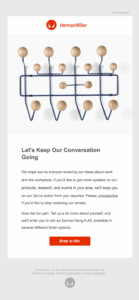
Herman Miller did a wonderful job in this email. The feedback request sounds more like a friendly invite to “keep the conversation going” than a business message. To encourage recipients to share more about themselves, they invited them to enter their giveaway for one of the brand’s top-selling products.
Create meaningful email preference centers
Having an email preference center in your email footer is an excellent alternative to a plain unsubscribe link. However, it’s more than just a retention tool.
Email preference centers serve as mini personalization engines, helping you serve subscribers better by delivering content and offers that match their interests.
Here’s what you can learn:
- How often they want to receive your emails, e.g., weekly or monthly newsletters
- What kind of content they prefer, e.g., promotional or educational campaigns
- Which topics, products, or services interest them most
Email preference center data is a great example of zero-party data at work. You give recipients the option to adjust their preferences whenever they want, keeping your data up to date. On the other hand, they get control over what they want to share. Which makes them more likely to stick around and stay engaged.
Let’s take the example of a pet care company. Subscribers use their email preference center to express interest in grooming products. This one data point unlocks various content ideas that resonate, ranging from care routine guides to short videos showing grooming techniques.
But here’s the key: honor their choices. For example, if a recipient opted for weekly newsletters, don’t send them daily emails. Respect builds trust, and trust builds retention.
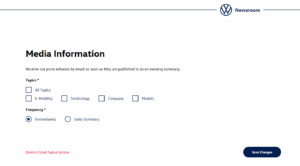
Adding topic preferences to an email preference center is a standard practice. Volkswagen takes it a step further by offering subscribers the option to receive press releases as soon as they’re published. And fresh content sells fast.
Want to offer this kind of control to your recipients? You can build an email preference center with Moosend and allow them to choose what they want to hear about, and when.
Add interactivity (and fun) to data collection
Interactivity has been on marketers’ radar for some time. The difference is that today consumers have higher expectations.
It’s not that users don’t like quizzes anymore; but they want them to be actually fun, not feel like work. If your questions sound like a newsletter signup form or a feedback survey, you’ll lose their attention fast.
Instead, focus on turning preference-sharing into a fun experience. One that feels like a game they play without leaving their inbox.
For instance, you can use interactive quizzes to:
- Have subscribers choose between different products or product types with “this or that” questions
- Learn more about their habits and interests through personality quizzes
- Challenge subscribers with trivia questions related to your products to identify your most engaged customers
With interactive quizzes incorporated into your emails, you gather immediate feedback on their interests, and they get personalized recommendations or even a bit of insight about themselves. Win-win.
Besides tailored results, you can also offer them exclusive content, early access to new products or services, or small discounts in return for their participation.

Harry’s email invites subscribers to find their ideal shower scent through a three-step quiz. The questions are simple (e.g., “How do you spend your ideal Saturday morning?”) and tied to a specific scent profile.
The brand turns the quiz results into a tailored product recommendation to prompt the subscriber to buy. And if they don’t take the quiz, Harry’s lets them browse for themselves.
Engage your loyalty program members
Offering customers loyalty points is an effective way to drive repeat purchases. But that’s not their sole purpose.
You can also reward customers for other valuable actions, like leaving a review, submitting a star rating, or updating their profile. Loyalty programs are prime opportunities for zero-party data collection.
For example, provide bonus points when they update their contact information so you’ll always know how and where to reach them.
Or offer personalized rewards like a free product bundle they’ll love after they vote on potential new releases. This is an easy way to gather zero-party insights on product preferences while also guiding product development.
Sephora’s Beauty Insider is designed to deepen customer relationships through rewards and personalized product and content suggestions.

To improve their loyalty members’ experience, the brand asks them to rate products and share their preferences. In return, Insiders get perks and points. This way, Sephora turns every interaction into a data point while providing immediate value.
Take the simple approach
You don’t always have to go in-depth when asking for zero-party data. After all, long-form customer surveys, open-ended questions, or interactive quizzes might not be every recipient’s cup of tea.
In fact, the more straightforward the process, the more likely recipients are to complete it.
Therefore, you should offer options to share feedback in small, natural ways. Here are some micro-interaction examples that users can make without leaving your email:
- One-click rating buttons, such as thumbs up/down or yes/no buttons to measure the relevance of products, services, or content recommendations
- Polls with up to three choices, e.g., an HR agency asking: “What’s your main challenge when looking for a new job?”
- Emoji reactions that correspond to different sentiments, like party-popper for enthusiasm
This kind of real-time, minimum-friction zero-party data collection feels like a small checkpoint that doesn’t interrupt the email experience.
We all know that Netflix delivers recommendations based on our browsing and viewing history. But just because users watch something doesn’t mean they’re loving it.
So, they sent a focused and simple email to ask them directly using the one-click rating tactic while highlighting that they need it to further personalize the recipient’s experience.
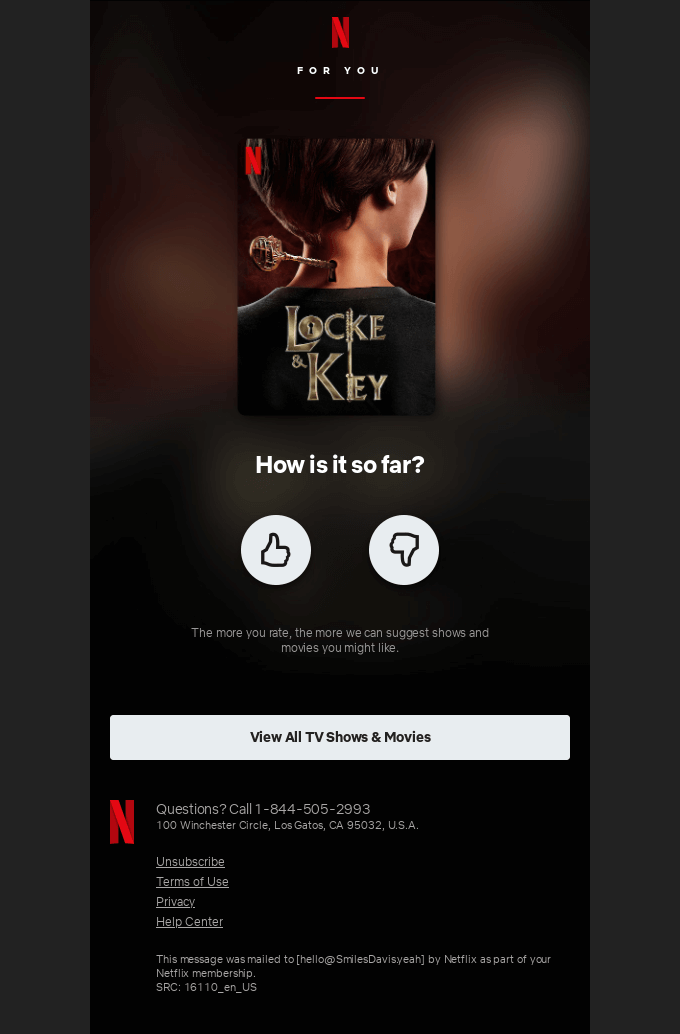
Don’t incentivize everything
Incentives are great. And they work. However, if you tie every feedback request and data interaction to a reward, it could backfire. It might bring back unreliable data, too, since some users could rush through the process. Or disengage after they get what they want.
Zero-party data works more effectively when your audience trusts you with it because they know you’ll use it to improve:
- Your messages
- Your products/services
- Your customer support interactions
So, the real incentive shouldn’t be the coupon code or the free product sample. It should be a mutually beneficial relationship that both parties are invested in. You can also use altruistic motivation, reminding readers that their input will help their peers get the most out of your products or services.
Here’s how Smoosh uses product development to incentivize subscribers to complete the survey. They throw in a reward, but it’s clear that lots of users would be happy to be part of the decision-making process either way.

Think of AI as a tool, not a replacement
AI is a powerful ally for brands that want to gather both zero-party data and first-party data, helping them collect and analyze audience insights faster and more efficiently.
Below you’ll find a few ways to incorporate AI technology into this process:
- An AI chatbot asking quick questions without feeling as intrusive or time-consuming as a review request
- AI-driven quizzes on your product pages helping you determine which products/services are the best fit for the user
- AI-powered voice assistants in your app, offering a frictionless way to collect zero-party insights in real time that feels like a natural conversation
But AI shouldn’t be the one dictating the process, just the tool to enhance it. You should never skip the human factor. You can use AI in email marketing, letting it create a campaign based on your prompts, subscriber data, and intended tone of voice.
However, human marketers are the ones feeding it with unique prompts. More importantly, AI usually doesn’t come up with a creative idea the way the human brain does. Plus, it’s no substitute for real-life communication, e.g., during a customer support call.
So, use AI to help you in what it does best: streamlining tasks and freeing up time, so you can focus on brainstorming, adding context, and building connections.
How to Use Zero-Party Data in your Emails
After collecting zero-party data, it’s time to use it to create personalized campaigns that drive engagement.
Revisit existing data before asking for more
Before you ask subscribers to tell you anything new, start by listening to what they’ve already shared or done. For instance, you may already know their preferred communication channels or what topics they search for on your blog or social media.
Analyze these insights to identify potential gaps or additional information you may need. By knowing what information you’re missing, you’ll know what to ask next.
Let’s say you used a quiz on your website to learn where your audience stands on product sustainability. A visitor selects “buying eco-friendly products” as a top priority.
You can take the conversation one step further by sending an email survey with a targeted question like: “Which eco-friendly practice matters the most?” And let them select between packaging, materials, and production process.
With this focused follow-up strategy, you’re not asking blindly. You let existing data guide your next question. On top of that, you respect your subscribers’ time while increasing your chances of getting responses.
Match data to specific outcomes
Zero-party data gives you a free pass to your recipients’ minds. However, when they specify their buying habits in a survey, like choosing summer sales over winter ones, they do it so you can later deliver timely promotions based on this insight.
So, if you asked for the recipient’s birthday but never sent a birthday email with a discount or just warm wishes, chances are that recipients will think twice before sharing more.
Apparently, that’s not an uncommon practice since 51% of consumers feel that businesses don’t use their personal information in their favor.
But when they see their feedback turning into tailored content, product or service suggestions, or specific email cadence, it tells them you’re actively listening.
Therefore, you should regularly review incoming data to act on your audience’s changing preferences. Then, use them to optimize your marketing strategies, offerings, and overall customer experience.
Use zero-party data to create dynamic content
One of the main benefits of zero-party data is that they go beyond basic demographics when collected strategically. These are premium insights, revealing things like your audience’s true motivations or goals.
As such, they’re perfect for creating dynamic content. With this tactic, you can build highly personalized content blocks that change automatically to match the recipient’s shared interests.
For example, a travel company could use a preference center to ask customers about their preferred vacation type, e.g., adventure, relaxation, or culture. Then, the brand uses the information to add dynamic content blocks to their next campaign promoting a new travel guide series.
A visitor who selected “adventure” will receive hiking trail recommendations whereas those opting for relaxation will see guides for spa getaways. For those who love cultural vacations, the corresponding section will display heritage tours.
Dynamic content is a goldmine for real-time and personalized product, service, or content recommendations. Subscribers share what they need, and you turn it into one-to-one, valuable messages.
Which Features Do You Need for Zero-Party Data Collection?
To prompt subscribers to share their personal details, you need more than a well-guided zero-party data collection strategy. You need the tools that will support that strategy and deliver the desired results. Here’s your checklist:
Email marketing platform
You can’t personalize your emails without a reliable email marketing automation platform. These tools usually include features for smooth and safe data collection and management. So, here’s what to look for:
- Lead generation tools to create online forms and landing pages and gather essential audience information. To save time, you’ll want built-in responsive templates that you can customize to your branding. Plus, ensure mobile-responsive design, so you leave no opportunity untapped.
- Dynamic blocks that display different email content, such as copy, visuals, or product recommendations based on each recipient’s preferences.
- Ready-made automated workflows to engage your audience with timely messages that also work as data points. For example, Moosend offers recipes for customer onboarding, loyalty, and post-purchase survey sequences—all serving as opportunities to learn more about your subscribers.
- An email preference center feature to give subscribers control over the kind and number of emails they want to receive. Once they make the choice, you can segment your audience accordingly, optimizing their email experience.
Survey tool
User-friendly survey tools help you collect valuable feedback. This kind of software makes it easy to build spot-on surveys in a few clicks.
Most tools like Typeform and SurveyMonkey allow you to use pre-built templates and add branded elements like your logo, colors, and fonts. Or you can create your own form by selecting from various question types.
And it’s not just plain surveys. Most tools allow you to create questionnaires, interactive quizzes, and video surveys.
Plus, some survey solutions offer third-party integrations, so users can sync responses to their existing tools for secure and smooth data management.
AI chatbots
AI-powered chatbots collect and analyze data in real time during user interactions. Simulating human-like conversations, they engage with visitors to understand their preferences, challenges, and purchase history.
Based on this information, they provide users with personalized recommendations or solutions to their pain points. Plus, they can handle a large volume of conversations that would take much more time if managed by a customer service representative.
Most AI chatbots also offer seamless integration with existing tools like CRMs. But you have to ensure they come with customization options, too. That way, every interaction will align with your communication style, tone, and unique objectives.
Some of the most popular options are HubSpot’s Chatbot Builder (which is also free) and Zendesk AI.
Zero-Party Data: Where Trust Meets Results
As we’re moving toward a cookie-less world, zero-party and first-party data are essential currencies—especially when combined.
Zero-party data, in particular, transforms email marketing: building personalized experiences, increasing engagement, fostering conversations. But its impact depends on your ability to collect zero-party data effectively and put it into action.
Moosend offers you all the necessary tools under one roof: beautiful signup form and landing page templates, audience management, dynamic content, and an email preference center feature.
Plus, integration with third-party platforms to enhance data collection using surveys and quizzes. And AI-powered features to segment and target your audience effectively.
If you want to explore the potential of zero-party data, create a Moosend account and turn every email into a meaningful, two-way conversation.
FAQs
Let’s check the answers to zero-party vs party-data common questions:
1. What’s the difference between zero-party and first-party data?
Zero-party data is information that customers intentionally share with a brand. For example, survey responses, email preferences, or answers to a quiz. First-party data is information you collect by monitoring user behaviors, such as purchase history or email engagement. While it’s still owned by the brand, it’s inferred rather than directly stated.
2. How are second-party and third-party data different from zero- and first-party data?
Second-party data is information that brands acquire from others through a direct partnership. For example, a hotel chain might share its loyalty data with an airline for collaboration purposes. Third-party data is collected from various sources and sold by data providers. This type of data is about to demise due to increasing privacy regulations, making zero- and first-party strategies dominant.
3. What challenges could brand face during zero-party data collection?
The main challenge for marketers is the volume of data collected since it comes from users engaged with tools like quizzes, forms, surveys, and preference centers. Plus, there’s also the issue of trust. If you ask for personal information, do it only to deliver relevant email content in return.
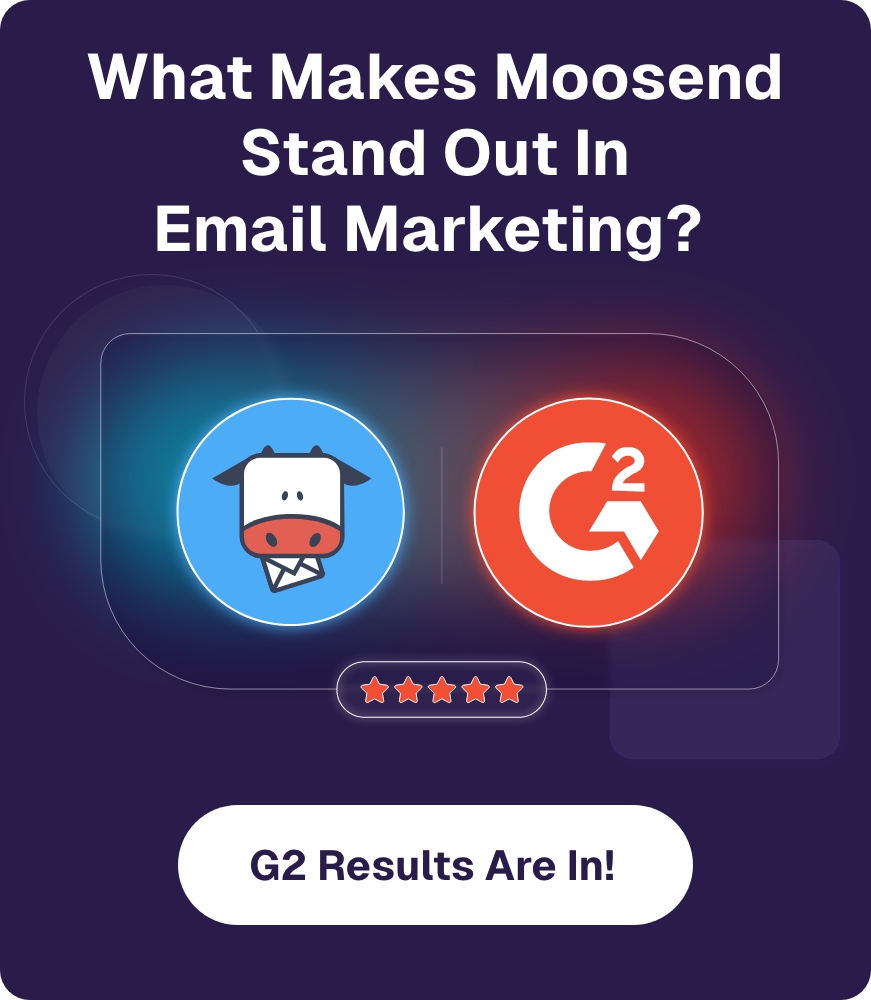

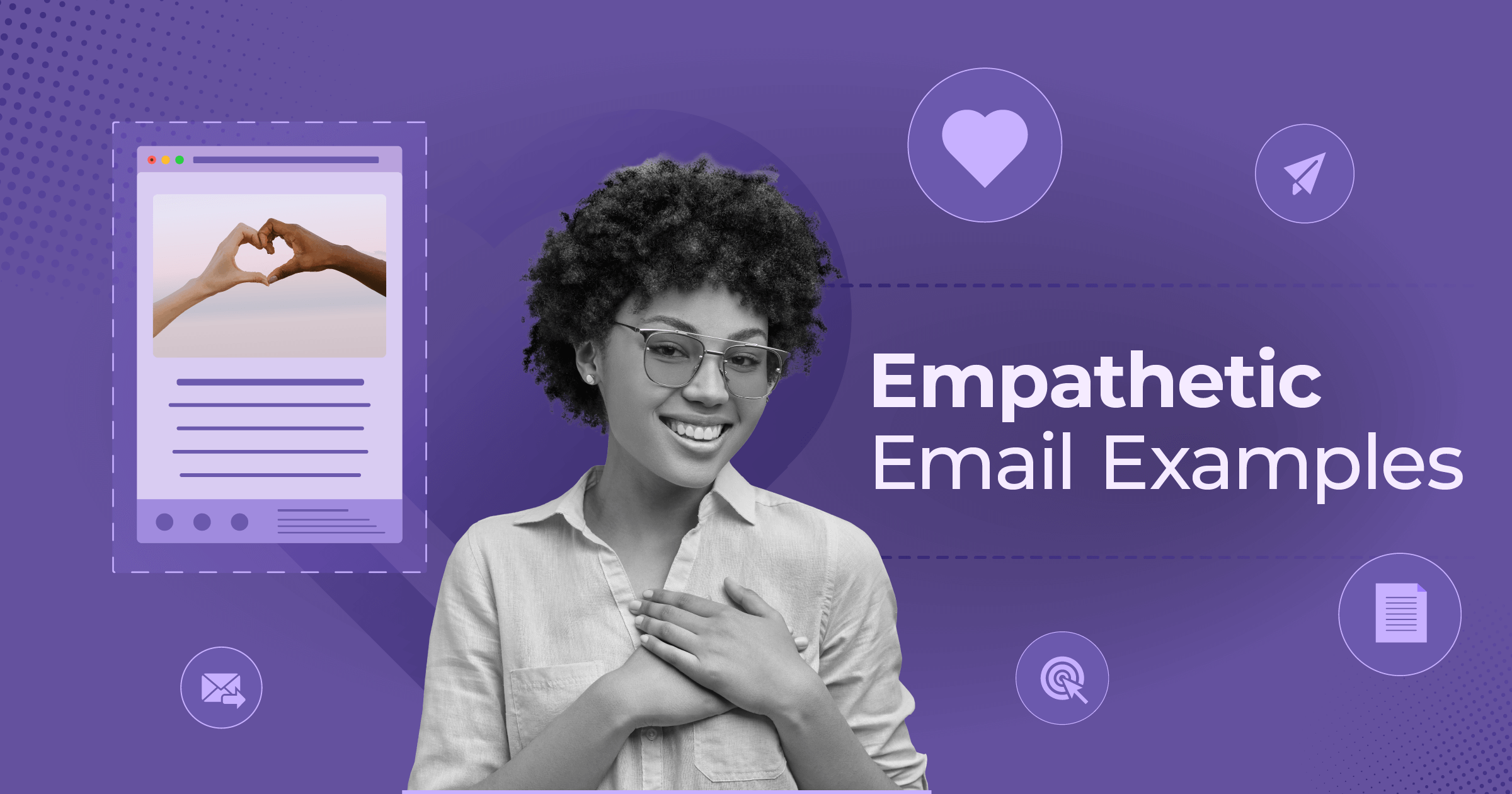
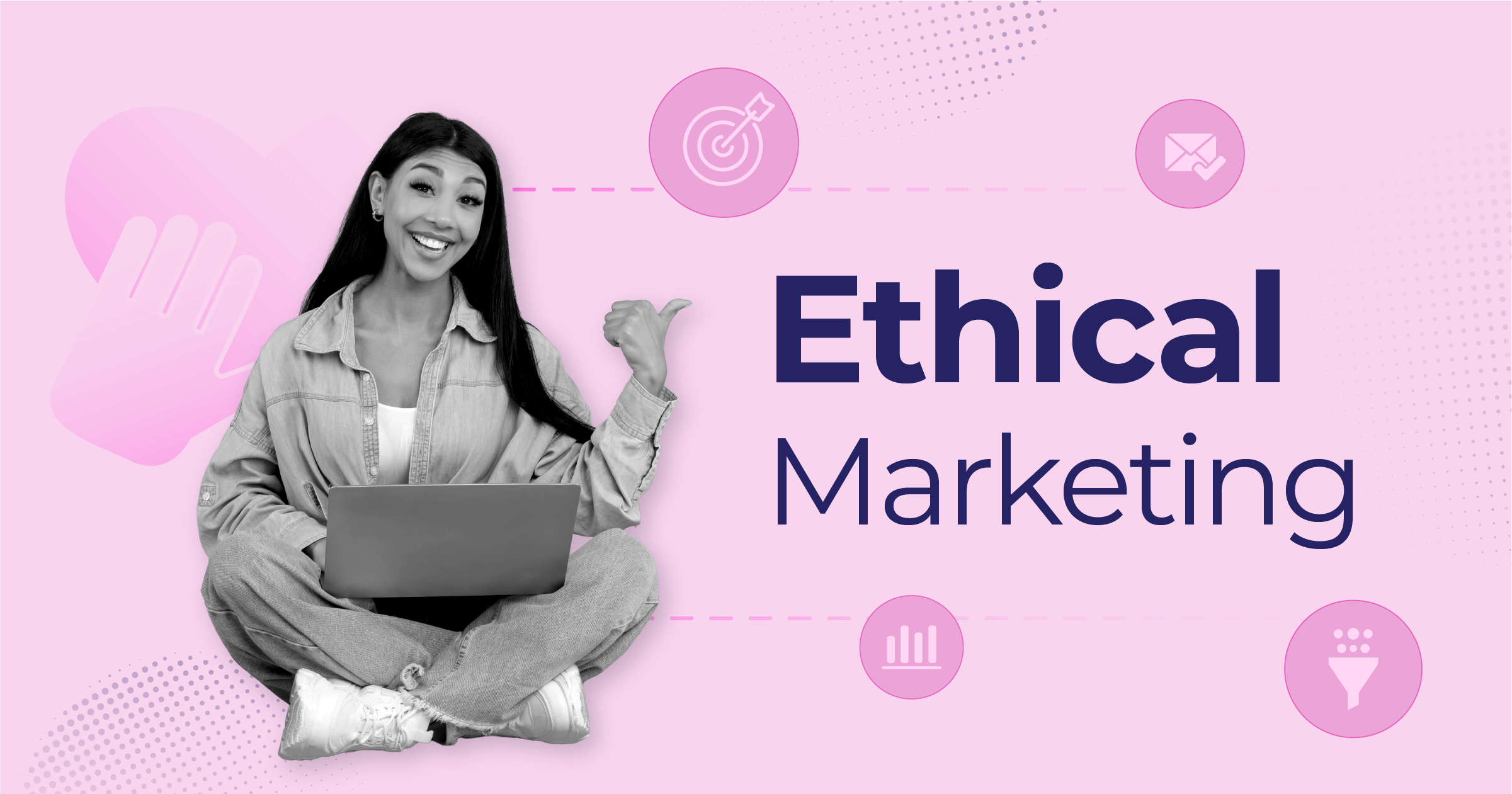
 Published by
Published by
